Whilst my Dad was visiting, we decided it was time to have a go transmitting on HF bands. Well, to put it more accurately, I decided that he needed to trasmit on HF bands! (As whilst I am still in Germany, I cannot transmit). Although we had previously set up the end-fed antenna and mast, we had only ever listened. This would be the first time attempting to transmit! As we anyways needed to be portable (we have not yet figured out a home setup), it was only natural to combine the attempt with a POTA activation.
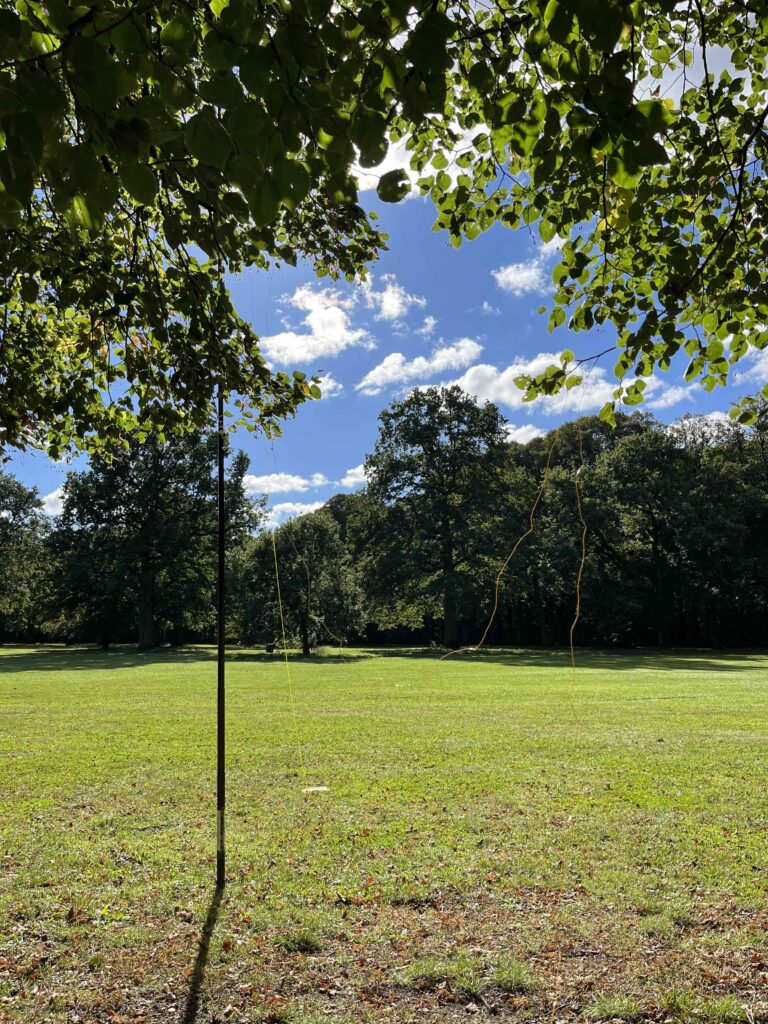
Having decided to go for Altona Volkspark, we found a handy bench and an open space. Almost straight away, we were able to hear other people doing SOTA and POTA, and were receiving people as far away as Italy! We made many CQ calls, but were unsuccessful, and after three hours, decided to pack up and get a beer instead!
As you can see from the above picture, we had not guyed the mast, and instead leaned the mast against the tree. The antenna was also strung up into the tree, and not well stretched out. Maybe the activation was unsuccessful due to poor antenna setup / we had accidentally grounded it?
The next few days were spent properly erecting the mast and the antenna, and attempting to make contacts. We tried the 10m, 20m and 40m bands. All attempts were unsuccessful. Although we could hear ourselves on the hand scanner that we had with us, we did not see ourselves on nearby webSDRs. Perhaps we were in a dead zone for this wavelength? Or were we really not reaching them? We tried a local 10m repeater, and could not reach that. It was time to debug the setup
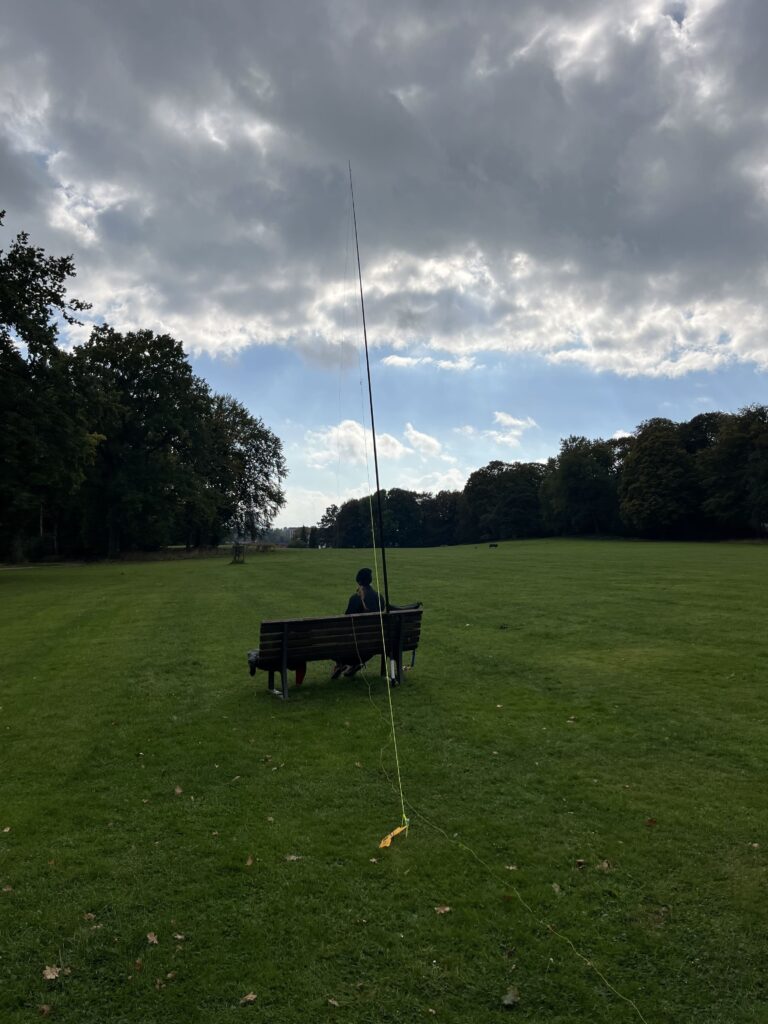
The first thing we did was to verify that we were indeed setting the maximum transmit power of 6W. When reading the Yaesu FT-818nd manual about transmit power, it states that when using the internal battery pack, output power is automatically set to 2.5 Watts. To set 6W, you need to cycle through the power options, and when the symbol for 2.5W started flashing, then you are on 6W. What was confusing, was that the symbol for 5W did not appear on-screen at all. But as we did not (yet) know of a way to verify the transmit power, we had to assume that we were indeed transmitting on 6W.
Could the problem be the antenna?
We use the sota beams band springer midi antenna (https://www.sotabeams.co.uk/bandspringerMidi40m30m20m/). This is an end-fed antenna, and therefore does not help us out in terms of gain. However, the website states that it is for use with a Yaesu FT-817, or similar, so it should indeed work with our 818. Reviews online also show many happy customers successfully using it with their FT-818’s, therefore it seemed unlikely to be the antenna. Time to move on and check the next part of our setup, the antenna tuner unit.
The antenna tuner unit that we are using is the Kanga pocket transmatch (https://www.kanga-products.co.uk/ourshop/prod_7635987-QRP-Pocket-Transmatch.html). It is a self-built kit which requires you to wind your own toroidal core. The instructions explicitly state, that if you do not wind it correctly, then the performance of the ATU will be reduced. However, after opening up the transmatch and inspecting it by eye, the windings looked expertly done. Well done to my Dad for the work, but disappointing to have not found the source of our problem.
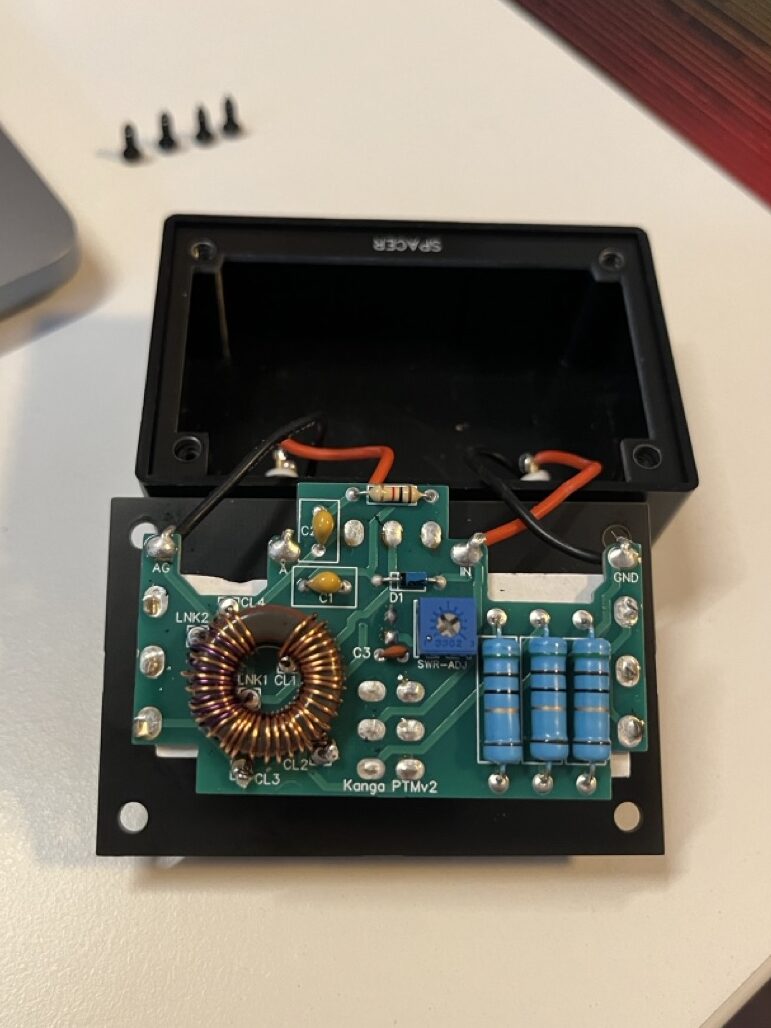
So, there was nothing obviously wrong with the antenna or the antenna tuner unit. Could we somehow test our setup? Was it possible that we were transmitting, but no one wanted to answer our CQ? Thats when we discovered the reverse beacon network.
The reverse beacon network (https://www.reversebeacon.net/main.php?rows=10&max_age=10,hours&hide=distance_km) is a global network of beacons, that responds to certain calls (CQ / BCN / TEST ect), and logs them. This allows you to see band conditions, and verify your own propagation. As we were dubious as to whether we were indeed outputting the full 6 Watts, and whether we were reaching anyone at all, it would be ideal! Unfortunately, It only works with digital modes, hence our need to try CW! Luckily, you can use the Yaesu microphone as a keyer, (more information to come in another post) so we did not need to purchase any additional equipment. It is surprisingly difficult to key morse successfully so that a computer can understand it. In the end, we had a lot of fun, but we did not reach the reverse beacon network. And then we had a problem: Did we not reach it because of an fault in our setup, or was our morse so terrible, it could not be decoded?
I stumbled across the information that the Yaesu FT-818nd does in fact have a power meter! That should show us, if the Yaesu was supplying the full 6 Watts or not. It is actually in the same menu as power adjustment, which we use almost every time we setup, to manually set the power to maximum. You find it by short pressing the F key, and then scrolling through the menu items until you see the line “PWR MTR”. Pressing the “B” key allows you to change the MTR options, and the one for power is MTR pwr.
We set up for the 10m band, and pressed PTT. It is hard to read in the picture below, but the power meter showed that we only had half power! Was this indeed the answer? Did the Yaesu actually not supply 6W, when using the internal battery pack?
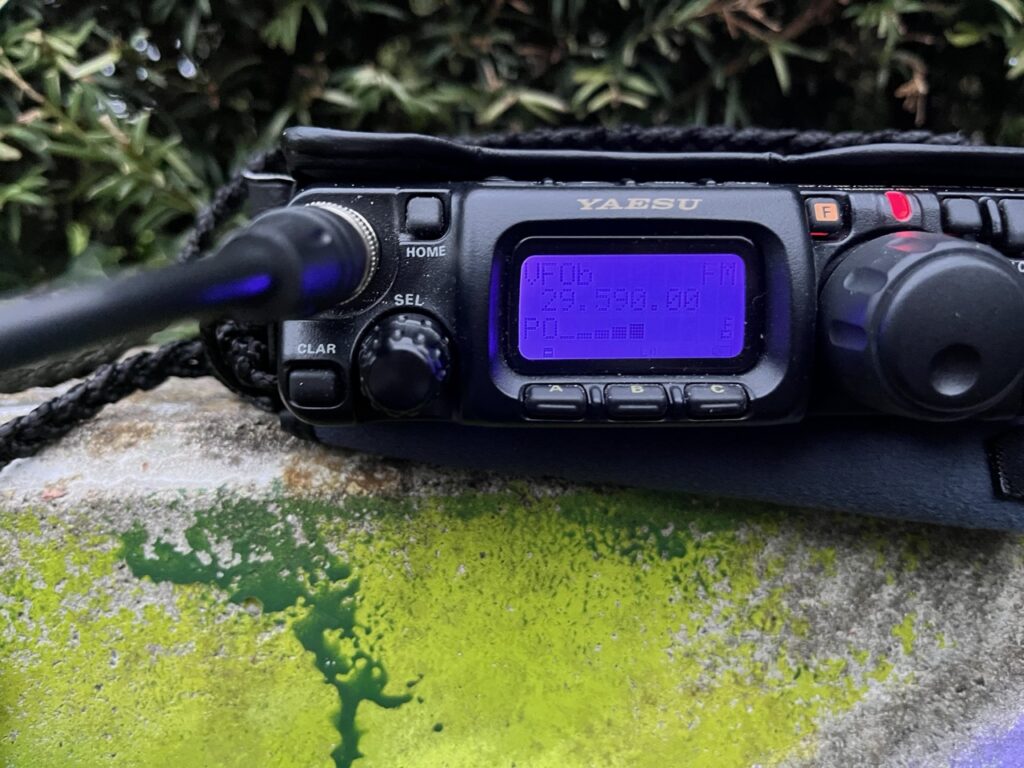
As luck would have it, we had recently purchased a car charging cable for the Yaesu – what would happen if we plugged it in, and tried to transmit on the 10m band? The 12V car battery should give us 6W, and therefore the power meter should show us full power! The test confirmed our theory.
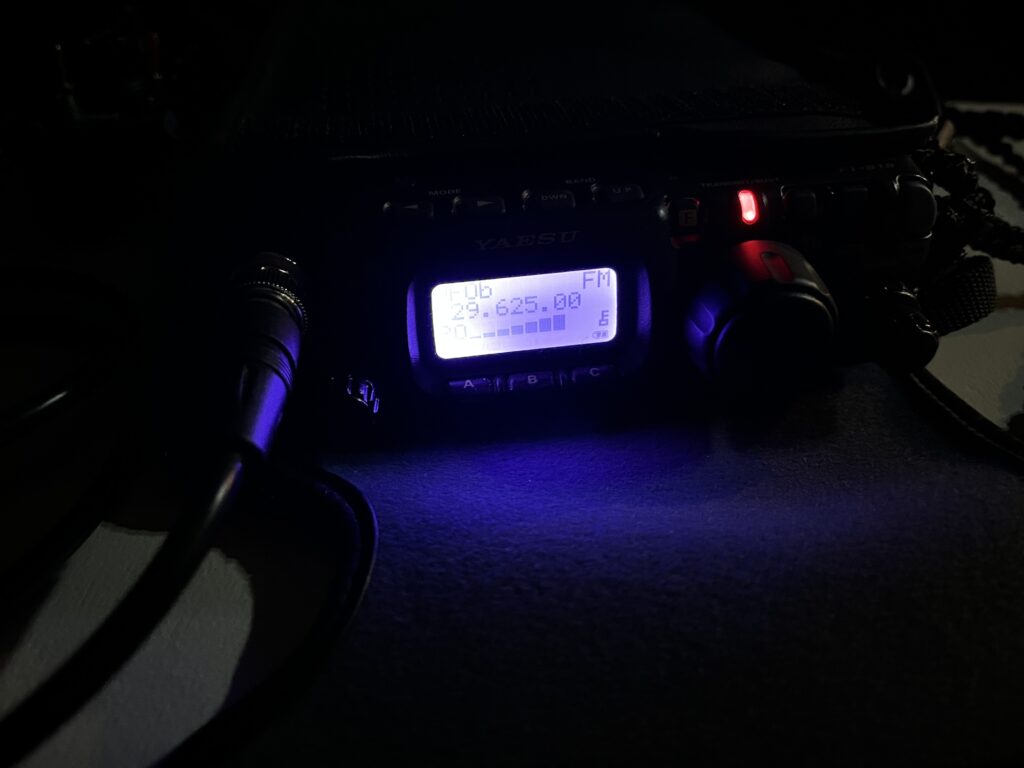
The result of the test convinced us, that it would indeed be worth buying an external lithium battery pack, so we zoomed off to the local radio shop to pick one up. The next POTA activation we tried, we were able to get two QSO’s. Success! Transmitting on the Yaesu drains quite some power, and therefore we only had about one hour transmitting at the full 6W.
Whilst increasing the power output did help us make successful QSO’s with our HF setup, and we learnt alot in the process, I am sure that there is more to discover. One thing that kept coming back in the research that we did, was that “antennas are more important than power”, so thats definitely on the list of things to try out. We also need to pay more attention to band conditions, as we wasted an evening attempting to make contact during a solar flare! Before we make any more changes we need to play around with the current setup, and see how we reliably we can use HF bands.
